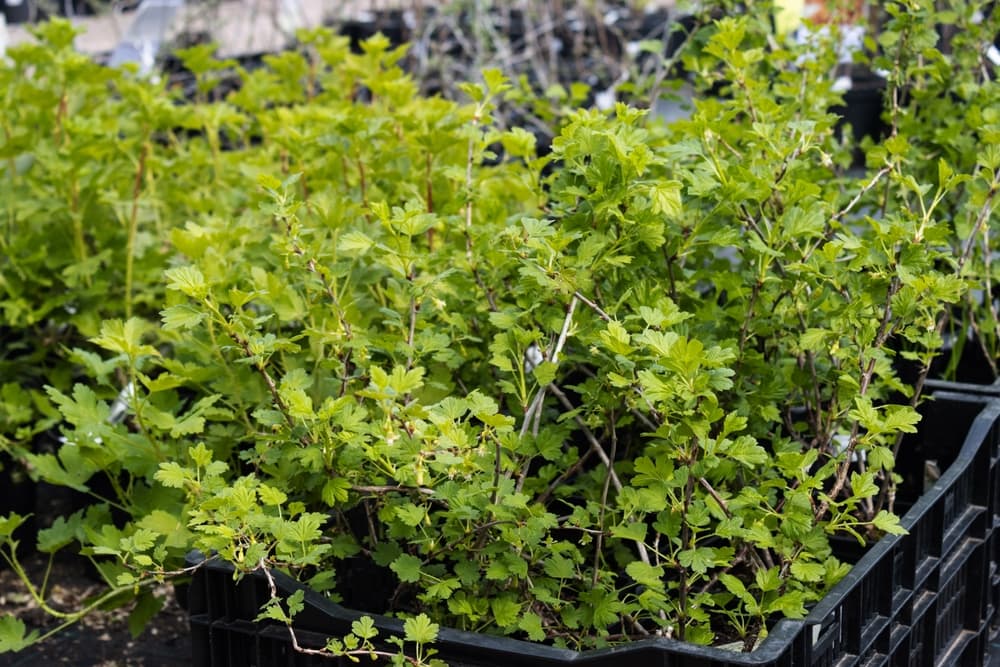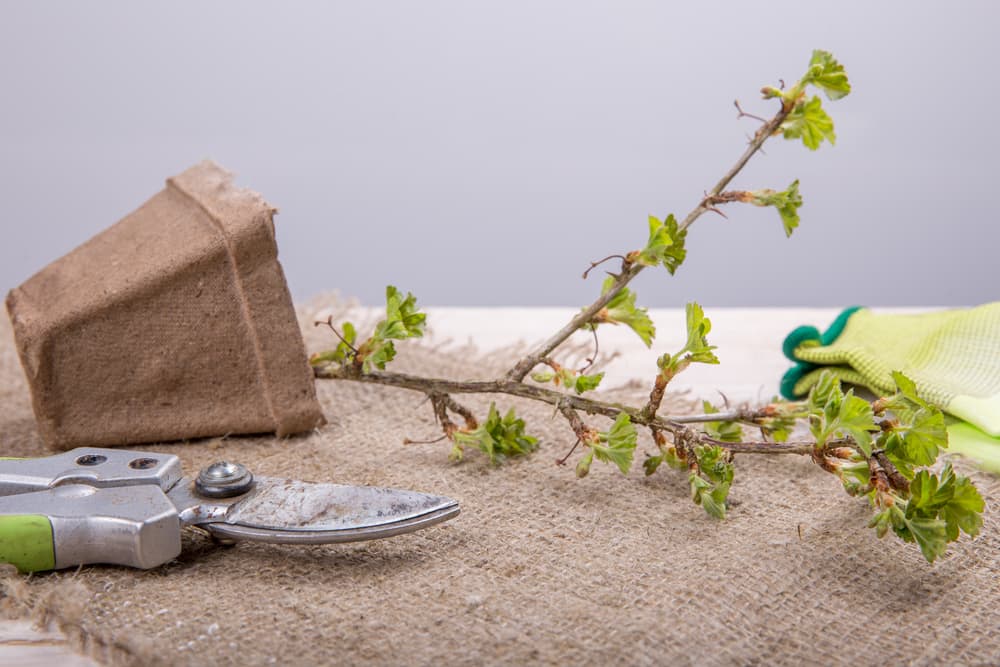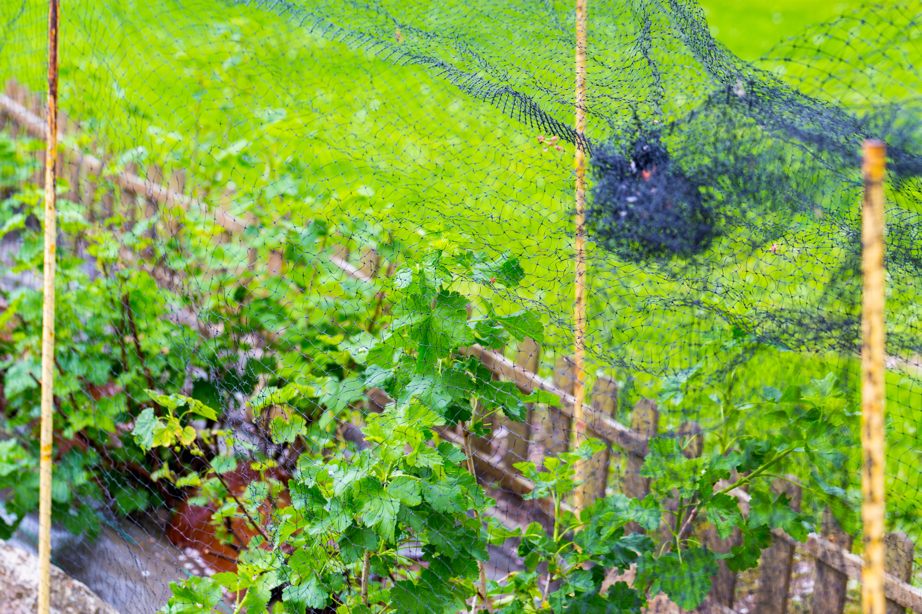How To Get Abundant Yields From Gooseberry Shrubs Grown In Pots (With Little Effort)

FRUIT > GOOSEBERRY > CONTAINERS

Elizabeth is a Permaculture Garden Designer, Sustainability Consultant and Professional Writer, working as an advocate for positive change. She graduated from the University of St. Andrews with an MA in English and Philosophy and obtained a Diploma in Applied Permaculture Design from the Permaculture Association.
Reviewed By COLIN SKELLY

Colin is a Horticulturist and Horticultural Consultant with experience in a range of practical and managerial roles across heritage, commercial and public horticulture. He holds the Royal Horticultural Society’s Master of Horticulture award and has a particular interest in horticultural ecology and naturalistic planting for habitat and climate resilience.
IN THIS GUIDE
GOOSEBERRY GUIDES
Container Growing
Harvesting
Propagation
Pruning
Sawfly
Varieties
Gooseberries are wonderful shrubs that are very easy to grow in a garden and can produce abundant yields with very little effort on your part.
Gooseberries grow best in full sun or dappled shade, in moist yet free-draining soil.
But they are very tolerant plants that can cope with a wide range of different soils and growing conditions.
If you would like to grow gooseberries where you live but don’t have much space, or you rent your property, you might wonder whether you can grow gooseberries in containers.
Can You Grow Gooseberries In Containers?
The good news is that you can indeed grow gooseberries in containers.
While this will typically take a little more work than growing them in the ground, they can easily be maintained to grow even in the smallest of spaces.
Gooseberries can be kept in a bushy, natural form but they can also be trained and pruned to keep them within different forms.
They can be fan-trained, for example, and placed against a wall or fence, or they can be grown as cordons.

You can grow gooseberries in a range of shapes and forms in containers, but perhaps training as a cordon is the best option for container growing and small space gardeners.
Bushes can be kept small, but typically need to be spaced 1-1.5m apart.
Cordons, on the other hand, can be placed just 30-35cm or so apart.
This will mean that gooseberries in containers will be able to be placed much closer together to make the most of whatever space is available.
Remember, however, that cordon plants will require support, so whether growing in containers or in the ground, you will need a support system in place.
Choosing Pots For Gooseberry Plants
You can grow gooseberries in a range of different containers.
Often, you can get away with planting a gooseberry in a 20L pot, but larger is generally better when it comes to gooseberries.
When choosing a container, you should choose one that is as wide as possible.
Since gooseberries are fairly shallow-rooted, depth is less important for these plants.

A container at least 40-50cm across will be best.
The container should have drainage holes at the base, to allow excess water to drain away freely.
Gooseberries do like moist conditions but they also prefer the environment to be free-draining and can experience issues in waterlogged conditions.
Choosing A Growing Medium
When growing gooseberries in containers, you can plant them into any peat-free, soil-based, multi-purpose compost.
I find that they do well in containers filled with a homemade mix of 1/3 clay-loam soil from my garden, 1/3 homemade compost and 1/3 leaf mould.
“If you don’t have access to homemade ingredients, young plants can be potted into John Innes no. 2 compost and then into John Innes no.3 once established and transferred to a larger pot,” shares Horticulturist Colin Skelly.
“This will ensure sufficient nutrients, moisture and drainage.

“An annual top-up of compost would be beneficial and plants should periodically be re-potted every 3-5 years depending on the final pot size and pruning form.”
You don’t have to worry too much about which growing medium you use, since these are tolerant plants that can grow well in a wide range of growing conditions.
As long as the soil does not become waterlogged and is reasonably fertile, the gooseberries should do pretty well.
Potting Up Gooseberries
Gooseberries can be purchased as bare root plants during the winter months in the dormant period, or they can be purchased as potted plants in active growth.
There are many different varieties that you might choose from.
Place a little of your growing medium in the base of the container you have chosen, then position the plant in the pot.

You can plant the gooseberry in its new container a little deeper than the soil mark on a bare-root plant, or a little deeper than it was in its previous pot.
How Many Can You Plant Per Pot?
Giving gooseberries space to spread is important, so as well as choosing as wide a container as you can, you should also avoid planting other plants within the same pot.
Instead of planting other plants with your gooseberry in a container, mulch around the plant with organic matter upon planting.
Afterwards, water your newly potted up gooseberry in well, and it should begin to reward you with abundant harvests over the coming years.
Potted Gooseberry Care
Sunlight
Place containers with gooseberries in a sunny spot, or in dappled shade.
Support
Make sure you provide support for cordon or shaped forms of gooseberry.
Watering & Feeding
Remember that plants grown in containers typically require more watering than plants growing in the ground, so water well, especially during dry spells in summer.

Aside from a mulch around the top of the container that should be replenished each spring, additional fertiliser will not typically be required.
However, if the growth seems poor, you can feed your gooseberry with an organic liquid feed in spring/summer.
Pruning
Pruning gooseberries properly will typically be essential when growing in pots.
How and when precisely you will prune will depend on the form of your plant and there are different pruning guidelines for bush form, fan and cordon plants.
Pests & Diseases

Remain vigilant for pests and diseases and work to maintain natural biodiversity and balance in your container garden to keep gooseberries healthy and productive.
Net or cage fruits to protect from birds and other pests where necessary.
